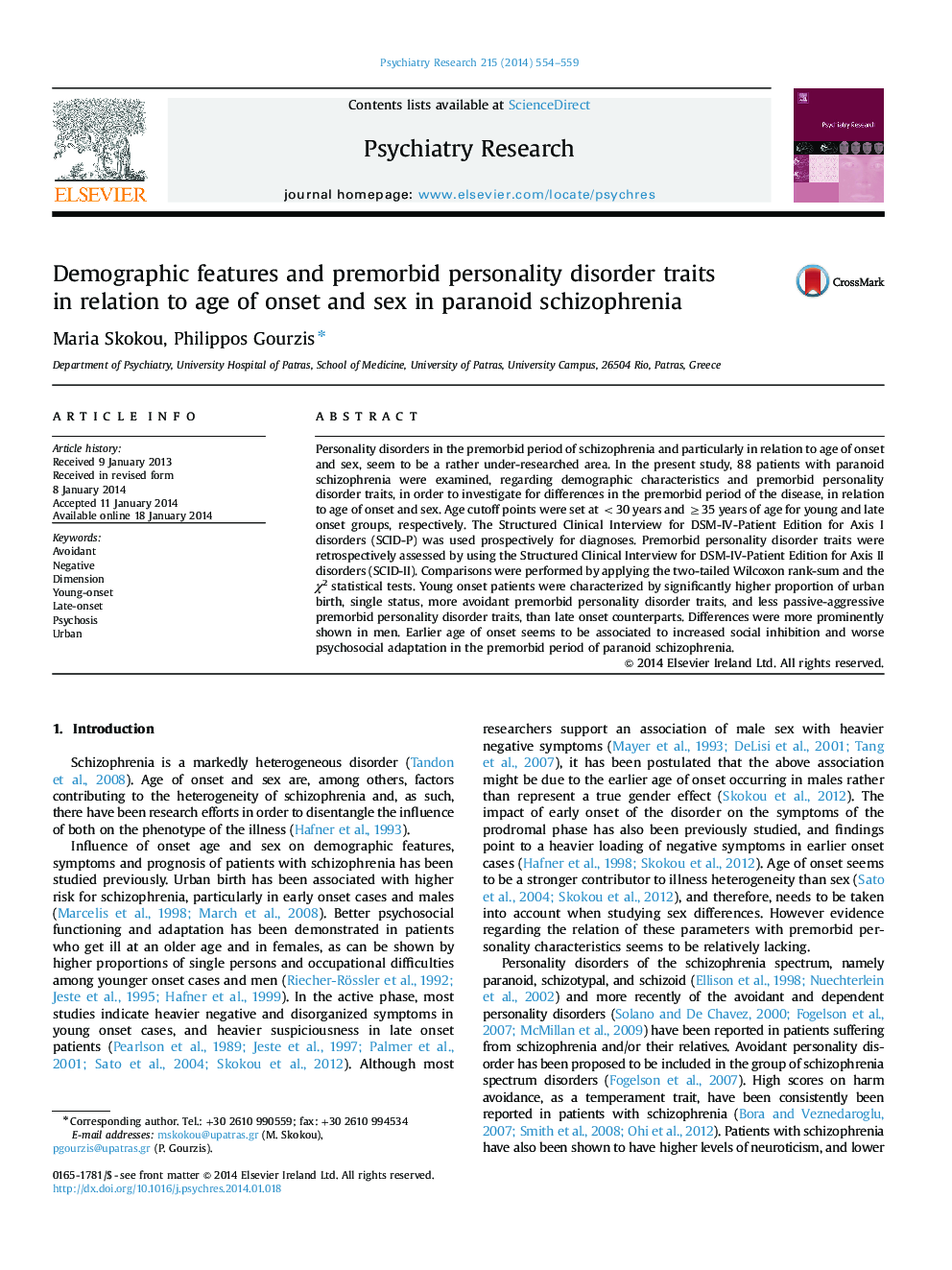| Article ID | Journal | Published Year | Pages | File Type |
|---|---|---|---|---|
| 10303872 | Psychiatry Research | 2014 | 6 Pages |
Abstract
Personality disorders in the premorbid period of schizophrenia and particularly in relation to age of onset and sex, seem to be a rather under-researched area. In the present study, 88 patients with paranoid schizophrenia were examined, regarding demographic characteristics and premorbid personality disorder traits, in order to investigate for differences in the premorbid period of the disease, in relation to age of onset and sex. Age cutoff points were set at <30 years and â¥35 years of age for young and late onset groups, respectively. The Structured Clinical Interview for DSM-IV-Patient Edition for Axis I disorders (SCID-P) was used prospectively for diagnoses. Premorbid personality disorder traits were retrospectively assessed by using the Structured Clinical Interview for DSM-IV-Patient Edition for Axis II disorders (SCID-II). Comparisons were performed by applying the two-tailed Wilcoxon rank-sum and the Ï2 statistical tests. Young onset patients were characterized by significantly higher proportion of urban birth, single status, more avoidant premorbid personality disorder traits, and less passive-aggressive premorbid personality disorder traits, than late onset counterparts. Differences were more prominently shown in men. Earlier age of onset seems to be associated to increased social inhibition and worse psychosocial adaptation in the premorbid period of paranoid schizophrenia.
Related Topics
Life Sciences
Neuroscience
Biological Psychiatry
Authors
Maria Skokou, Philippos Gourzis,
